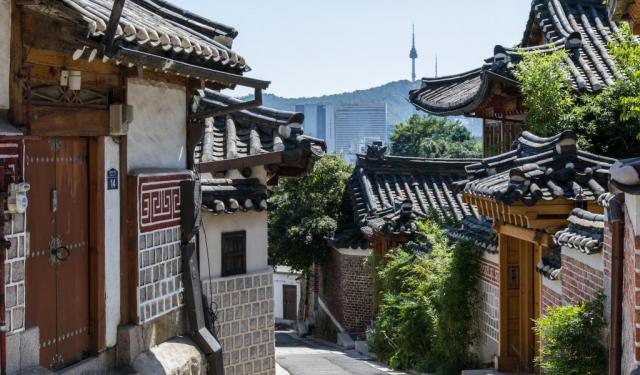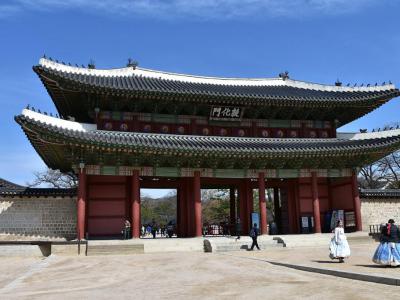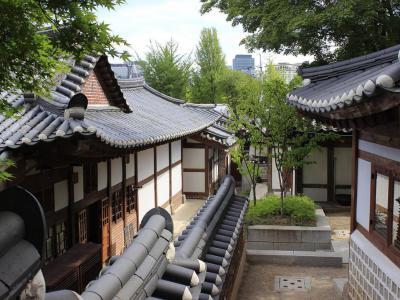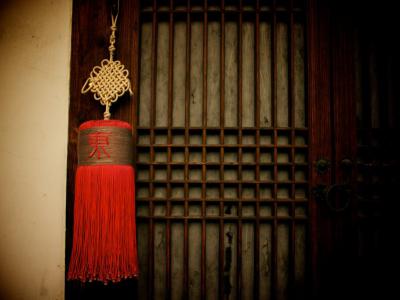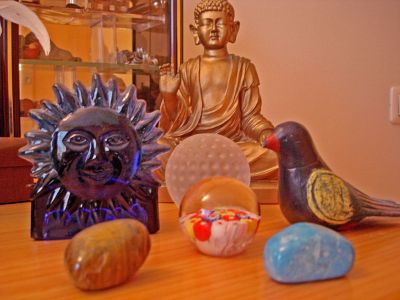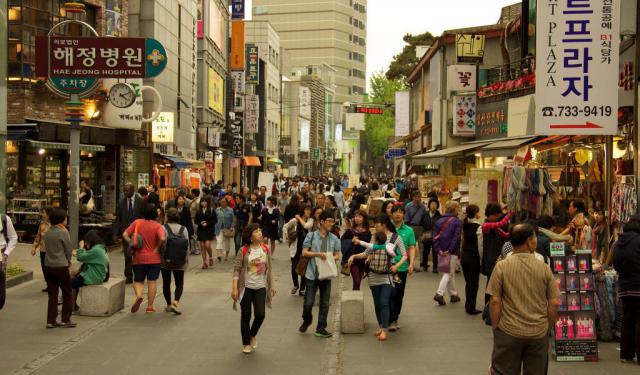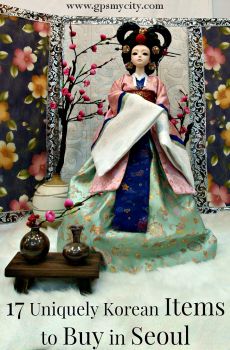Bukchon Hanok Village Walk (Self Guided), Seoul
Bukchon Hanok, the traditional Korean village in downtown Seoul, is famous for its well-preserved 600-year-old setting. Once home to the nation’s nobility, the village sits on a hill near the Changdeokgung Palace.
One notable attraction here is Baek In-je's House Museum, which provides insight into the life of a prominent Korean politician from the early 20th century. Meanwhile, the Dong-Lim Knot Museum showcases the intricate art of Korean knot tying.
For those interested in learning more about Korean art, the Gahoe Museum and Bukchon Art Museum are must-visit destinations. These institutions house diverse collections of traditional and contemporary artworks, providing insight into Korea's cultural evolution and allowing a comprehensive view of Korean artistic expression.
Exploring Bukchon Hanok Village enables visitors to appreciate the beauty of traditional Korean houses – hanoks – first built in the 14th century. Back then, Korean architecture was heavily influenced by the Chinese Feng Shui teaching, whereby the preferred location for a house is with a mountain at the back and water at the front. As you wander through the narrow alleyways of Bukchon Hanok, take the time to soak in the tranquil atmosphere and admire the intricate details of these historic homes.
Bukchon Hanok is a true gem of Seoul, offering a delightful blend of history, culture, and art. Don't miss the opportunity to explore this charming neighborhood and discover the beauty of traditional Korean life. Plan your visit today and embark on a mesmerizing self-guided journey through time in the very heart of the Korean capital!
One notable attraction here is Baek In-je's House Museum, which provides insight into the life of a prominent Korean politician from the early 20th century. Meanwhile, the Dong-Lim Knot Museum showcases the intricate art of Korean knot tying.
For those interested in learning more about Korean art, the Gahoe Museum and Bukchon Art Museum are must-visit destinations. These institutions house diverse collections of traditional and contemporary artworks, providing insight into Korea's cultural evolution and allowing a comprehensive view of Korean artistic expression.
Exploring Bukchon Hanok Village enables visitors to appreciate the beauty of traditional Korean houses – hanoks – first built in the 14th century. Back then, Korean architecture was heavily influenced by the Chinese Feng Shui teaching, whereby the preferred location for a house is with a mountain at the back and water at the front. As you wander through the narrow alleyways of Bukchon Hanok, take the time to soak in the tranquil atmosphere and admire the intricate details of these historic homes.
Bukchon Hanok is a true gem of Seoul, offering a delightful blend of history, culture, and art. Don't miss the opportunity to explore this charming neighborhood and discover the beauty of traditional Korean life. Plan your visit today and embark on a mesmerizing self-guided journey through time in the very heart of the Korean capital!
How it works: Download the app "GPSmyCity: Walks in 1K+ Cities" from Apple App Store or Google Play Store to your mobile phone or tablet. The app turns your mobile device into a personal tour guide and its built-in GPS navigation functions guide you from one tour stop to next. The app works offline, so no data plan is needed when traveling abroad.
Bukchon Hanok Village Walk Map
Guide Name: Bukchon Hanok Village Walk
Guide Location: South Korea » Seoul (See other walking tours in Seoul)
Guide Type: Self-guided Walking Tour (Sightseeing)
# of Attractions: 6
Tour Duration: 1 Hour(s)
Travel Distance: 1.7 Km or 1.1 Miles
Author: emily
Sight(s) Featured in This Guide:
Guide Location: South Korea » Seoul (See other walking tours in Seoul)
Guide Type: Self-guided Walking Tour (Sightseeing)
# of Attractions: 6
Tour Duration: 1 Hour(s)
Travel Distance: 1.7 Km or 1.1 Miles
Author: emily
Sight(s) Featured in This Guide:
- Changdeokgung Palace
- Baek In-je's House Museum
- Dong-Lim Knot Museum
- Gahoe Museum
- Bukchon Hanok Village
- Bukchon Art Museum
1) Changdeokgung Palace (must see)
Changdeokgung Palace, also known as Prospering Virtue Palace, has a beautiful setting in one of Seoul's parks. The palace enjoys status as one of the Joseon Dynasty's Five Grand Palaces. One of the noteworthy things about this 15th-century palace is that it blends into the natural topography in a way not commonly seen in other buildings.
The Donhwamun Gate and Geumcheongyo Bridge are two of the oldest structures on the property built in the 15th century. Injeongjeon Hall served as an area for coronations, as well as the reception of envoys. Seonjeongjeon Hall was the location for daily meetings with the king and government ministers, while Juhamnu Pavilion was once the royal library.
Huijeongdang Hall, a residence for the king, and Daejojeon Hall, the queen's residence, are also noteworthy. Yeon-gyeongdang Residence is an 1827 audience hall. Huwon is a garden consisting of 78 acres in the back of the palace.
Changdeokgung Palace is a UNESCO World Heritage Site.
Why You Should Visit:
Although sometimes referred as a 'backup' palace to Gyeongbokgung, the interior is actually more complete. As such, you will be able to have a better understanding of how life in a palace is like. The "Secret Garden" is a must-see.
Tip:
Those wearing 'hanbok' can enter the palace free. You can also buy the Royal Palace Pass that gives you free entrance to 5 palaces (including the 'Secret Garden', which is a highlight of this palace visit).
The Donhwamun Gate and Geumcheongyo Bridge are two of the oldest structures on the property built in the 15th century. Injeongjeon Hall served as an area for coronations, as well as the reception of envoys. Seonjeongjeon Hall was the location for daily meetings with the king and government ministers, while Juhamnu Pavilion was once the royal library.
Huijeongdang Hall, a residence for the king, and Daejojeon Hall, the queen's residence, are also noteworthy. Yeon-gyeongdang Residence is an 1827 audience hall. Huwon is a garden consisting of 78 acres in the back of the palace.
Changdeokgung Palace is a UNESCO World Heritage Site.
Why You Should Visit:
Although sometimes referred as a 'backup' palace to Gyeongbokgung, the interior is actually more complete. As such, you will be able to have a better understanding of how life in a palace is like. The "Secret Garden" is a must-see.
Tip:
Those wearing 'hanbok' can enter the palace free. You can also buy the Royal Palace Pass that gives you free entrance to 5 palaces (including the 'Secret Garden', which is a highlight of this palace visit).
2) Baek In-je's House Museum
Baek In-je's House Museum is a cultural heritage site that is also a museum. This home belonged to Baek In-je, who fought for Korea's independence from the Japanese occupation. In addition to being a Korean patriot, Baek was a physician dedicated to studying blood disorders and rickets, making significant contributions to research on these conditions.
This house is an example of a modern hanok-style home that also boasts modern touches. One of the most exciting attributes the house has is a view of Bukchon Hanok Village. Another feature that visitors love is its spacious garden.
Connected men's and women's quarters contain many of the original furnishings. Visitors who tour this property will have a whole new perspective on what life was like during the Japanese colonial period. The architecture is also worthy of your time, as it reflects what was once a popular style in Seoul.
This house is an example of a modern hanok-style home that also boasts modern touches. One of the most exciting attributes the house has is a view of Bukchon Hanok Village. Another feature that visitors love is its spacious garden.
Connected men's and women's quarters contain many of the original furnishings. Visitors who tour this property will have a whole new perspective on what life was like during the Japanese colonial period. The architecture is also worthy of your time, as it reflects what was once a popular style in Seoul.
3) Dong-Lim Knot Museum
Dong-Lim Knot Museum celebrates knots and their place as a part of Korean home decor and clothing. Korean knots are different from others because of their use of single strands of silk. The techniques used for creating these knots result in three-dimensional images, making them stand out from traditional macrame-based knots.
The knots that you can see here reflect four generations of this craft. You'll have the chance to see examples of what can be done with these knots on display. In addition to seeing the finished products, you'll also have the opportunity to watch the knot tiers at work.
You can buy some of these creations to take with you. Another exciting treat that awaits is the chance to take a workshop that allows you to create a Korean knot. Some of the examples of items you can create using these knots include cellphone "jewelry" and bracelets.
The knots that you can see here reflect four generations of this craft. You'll have the chance to see examples of what can be done with these knots on display. In addition to seeing the finished products, you'll also have the opportunity to watch the knot tiers at work.
You can buy some of these creations to take with you. Another exciting treat that awaits is the chance to take a workshop that allows you to create a Korean knot. Some of the examples of items you can create using these knots include cellphone "jewelry" and bracelets.
4) Gahoe Museum
The Gahoe Museum features Korean folk art, which was initially part of Yoon Yeolsu's private collection. The collection includes folk paintings, as well as religious amulets. The painting collection includes over 2,000 pieces, giving visitors an excellent representation of the different forms at work in Korean folk art.
One of the advantages that this museum offers is its suitability for all ages. Regardless of whether visitors are with a group that includes kids, other adults, or traveling alone, they will be sure to get something from the experience. One of this museum's primary missions is to help preserve local culture, and the collection of art available helps demonstrate the artwork's importance.
Visitors can also take folk art painting lessons at the museum. The painting style uses a variety of shapes and colors in unique ways. Taking part in a painting class is one of the best ways to gain an appreciation for this art form first-hand and express your creativity.
One of the advantages that this museum offers is its suitability for all ages. Regardless of whether visitors are with a group that includes kids, other adults, or traveling alone, they will be sure to get something from the experience. One of this museum's primary missions is to help preserve local culture, and the collection of art available helps demonstrate the artwork's importance.
Visitors can also take folk art painting lessons at the museum. The painting style uses a variety of shapes and colors in unique ways. Taking part in a painting class is one of the best ways to gain an appreciation for this art form first-hand and express your creativity.
5) Bukchon Hanok Village (must see)
The Bukchon Hanbok Village represents construction methods over 600 years old. The location is on a hilltop, with Changdeok Palace Gyeongbok Palace, and the Jongmyo Royal Shrine surrounding the site. In addition to the hanok-style houses, the village also boasts a network of alleys.
One of the attractions in the village is the Baek In-je's House Museum. This house museum allows you to easily see how these hanok houses are designed and appreciate the traditional features. The museum is easy to tour in 15 to 20 minutes, leaving you with plenty of time to enjoy the rest of the village, filled with exciting photo opportunities.
These houses feature an architectural style not seen in modern homes. Many of these buildings house businesses that are important to the cultural life of the village. Some of these buildings serve as restaurants where you can sample traditional foods, including dishes with ingredients fresh from nearby farms.
Tea houses are also an essential part of local life that you will not want to miss. When you visit a tea house, you can witness tea served in a traditional style. These locations are an essential part of local social life and provide another exciting glimpse into local culture.
Why You Should Visit:
See the centuries-old, unique architecture and take part in unique cultural experiences, a definition of a living history exhibit.
Tips:
Remember that Bukchon Hanok Village is an inhabited residential area today and that not all of the buildings are open to the public. But since many hanoks have been converted to restaurants and tea houses, you can pop-in to order a tea or a meal while enjoy the traditional architecture.
One of the attractions in the village is the Baek In-je's House Museum. This house museum allows you to easily see how these hanok houses are designed and appreciate the traditional features. The museum is easy to tour in 15 to 20 minutes, leaving you with plenty of time to enjoy the rest of the village, filled with exciting photo opportunities.
These houses feature an architectural style not seen in modern homes. Many of these buildings house businesses that are important to the cultural life of the village. Some of these buildings serve as restaurants where you can sample traditional foods, including dishes with ingredients fresh from nearby farms.
Tea houses are also an essential part of local life that you will not want to miss. When you visit a tea house, you can witness tea served in a traditional style. These locations are an essential part of local social life and provide another exciting glimpse into local culture.
Why You Should Visit:
See the centuries-old, unique architecture and take part in unique cultural experiences, a definition of a living history exhibit.
Tips:
Remember that Bukchon Hanok Village is an inhabited residential area today and that not all of the buildings are open to the public. But since many hanoks have been converted to restaurants and tea houses, you can pop-in to order a tea or a meal while enjoy the traditional architecture.
6) Bukchon Art Museum
Bukchon Art Museum is an art museum that boasts one of the most diverse collections of Asian art. In addition to 150 modern Korean art pieces, the museum has 2500 documents from the Joseon Dynasty. History enthusiasts fascinated with this era will enjoy the document collection.
There are also 200 Chinese art pieces as part of the collection, helping to increase the pieces' overall diversity. The collection of Chinese art highlights how different cultures have influenced Korea throughout its history. Seeing such a broad range of art in one location is a good way to appreciate Korea's culture.
In addition to being a museum, this location is also a tea house where you can enjoy tea and coffee. You can also enjoy antique tea pottery here, along with the main art collection. Some of the oldest pieces of pottery date to the fifth and sixth centuries. A balcony provides excellent views of the city's skyline.
There are also 200 Chinese art pieces as part of the collection, helping to increase the pieces' overall diversity. The collection of Chinese art highlights how different cultures have influenced Korea throughout its history. Seeing such a broad range of art in one location is a good way to appreciate Korea's culture.
In addition to being a museum, this location is also a tea house where you can enjoy tea and coffee. You can also enjoy antique tea pottery here, along with the main art collection. Some of the oldest pieces of pottery date to the fifth and sixth centuries. A balcony provides excellent views of the city's skyline.
Walking Tours in Seoul, South Korea
Create Your Own Walk in Seoul
Creating your own self-guided walk in Seoul is easy and fun. Choose the city attractions that you want to see and a walk route map will be created just for you. You can even set your hotel as the start point of the walk.
Insa-dong Walking Tour
Originating 500 years ago as a residential quarter for government officials, today's Insa-dong is a buzzing shopping and dining district in Seoul where the past meets the present. During the Japanese occupation of the country in the first half of the 20th century, wealthy Koreans were forced to move out and sell their belongings, at which point the district became a center of antique trading.... view more
Tour Duration: 1 Hour(s)
Travel Distance: 0.8 Km or 0.5 Miles
Tour Duration: 1 Hour(s)
Travel Distance: 0.8 Km or 0.5 Miles
Seoul Introduction Walking Tour
The bustling capital of South Korea, Seoul, seamlessly blends modern innovation with a more than 2,000-year history. Remarkably, until 1972, the city was claimed by North Korea as its de jure capital and even specified as such in its constitution.
Seoul was founded in 18 BC by the people of Baekje. The three ancient kingdoms of Korea – Baekje, Goguryeo, and Silla – fought over its... view more
Tour Duration: 2 Hour(s)
Travel Distance: 3.5 Km or 2.2 Miles
Seoul was founded in 18 BC by the people of Baekje. The three ancient kingdoms of Korea – Baekje, Goguryeo, and Silla – fought over its... view more
Tour Duration: 2 Hour(s)
Travel Distance: 3.5 Km or 2.2 Miles
Useful Travel Guides for Planning Your Trip
17 Uniquely Korean Souvenirs to Buy in Seoul
Back in the mid 20th century, a certain gentleman once spoke of Korea saying, it won't be possible to grow a rose in a waste bin. Certainly, one would hardly subscribe to his point of view today in every respect, given the image of contemporary South Korea and its capital city of Seoul in...
The Most Popular Cities
/ view all
